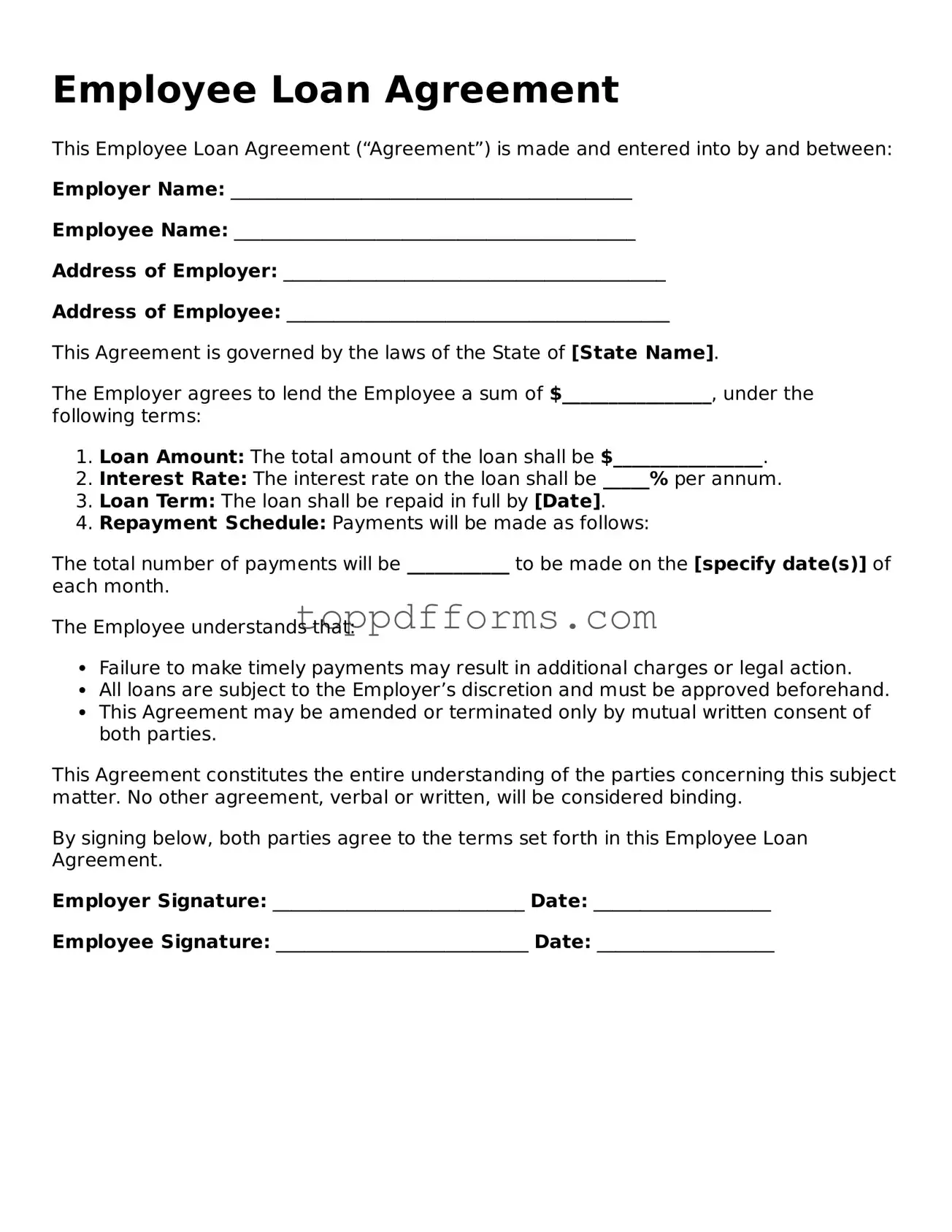When filling out an Employee Loan Agreement form, clarity and accuracy are paramount. One common mistake is failing to provide complete personal information. This includes the employee's full name, address, and contact details. Incomplete information can lead to confusion and delays in processing the loan.
Another frequent error is neglecting to specify the loan amount. It's essential to clearly state how much money is being borrowed. If this detail is missing, the agreement may be considered invalid or unenforceable.
People often overlook the importance of detailing the repayment terms. This includes the repayment schedule, interest rate, and any penalties for late payments. Without these terms clearly outlined, misunderstandings can arise, potentially leading to disputes.
Some individuals forget to include the purpose of the loan. Stating the reason for borrowing can help clarify the agreement's intent and may be necessary for record-keeping purposes.
Another mistake is not having the agreement signed by both parties. An unsigned document may not hold up in a legal context. Both the employer and employee should sign the agreement to confirm their understanding and acceptance of the terms.
People may also fail to keep a copy of the signed agreement. It is vital for both parties to retain a copy for their records. This can help avoid future misunderstandings about the loan's terms.
Some employees neglect to read the entire agreement before signing. This can lead to agreeing to terms that are not fully understood. Taking the time to review the document can prevent complications down the line.
Inaccurate dates are another common issue. The date of the agreement and the repayment start date must be correct. Errors in dates can lead to confusion regarding when payments are due.
Additionally, not consulting with a financial advisor or legal professional can be a mistake. Seeking advice can provide clarity on the implications of the loan and ensure that both parties are protected.
Finally, people sometimes assume that verbal agreements are sufficient. Relying on oral promises can lead to significant problems later. A written agreement is crucial for establishing clear expectations and protecting both parties' interests.
